10 Outdoor Plants For a Bee-Friendly Garden
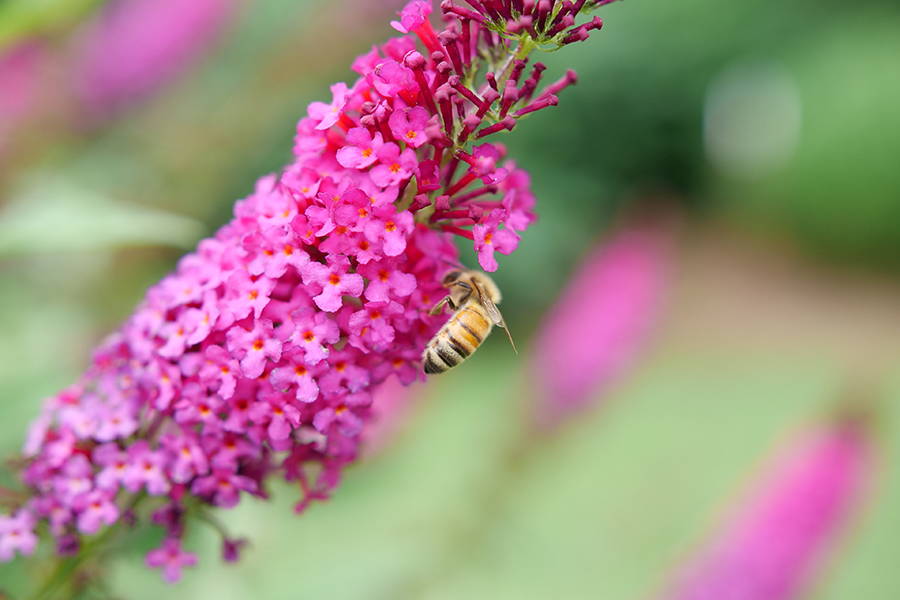
The symbiotic relationship between bees and plants is a testament to the intricate balance of the natural world. Bees are workers, no pun intended. They feed on nectar and spread pollen between plants, thus creating more plants and a thriving ecosystem for wildlife, humans, and other pollinators to enjoy. Beyond the aesthetics, bees and other pollinators like butterflies, birds, and flies are essential for our food supply. So, if you're interested in attracting and supporting bees, choose these plants to keep your garden buzzing!
What attracts bees to certain plants?
Bees and other pollinators have co-evolved with plants for over thousands of years to form a mutually beneficial relationship. Pollinators feed on nectar provided by flowers, and in the process, they collect and distribute pollen as their bodies brush against anthers and stigmas, successfully completing pollination. In turn, plants develop more attractive flower colors, scents, and nectar to entice pollinators to visit and aid in their reproduction. It's a win-win! Over time, bees continued to prefer plants that provide a food source with easy access (flat or tubular flowers) with lots of nectar.
Which colors do bees love?
Bees also have incredible vision and can easily perceive flowers that are purple, blue, violet/pink, white, yellow, and orange colors. Native perennials and shrubs in the violet-blue color range generally contain more nectar than any other color! Because bees can easily see these vivid bright colors it makes darker colors, like red, brown and black hues harder to see and less appealing. In fact, bees may interpret darker colors as natural predators and avoid any plants that are predominantly these hues.
Horticulturist-recommended plants for attracting bees:
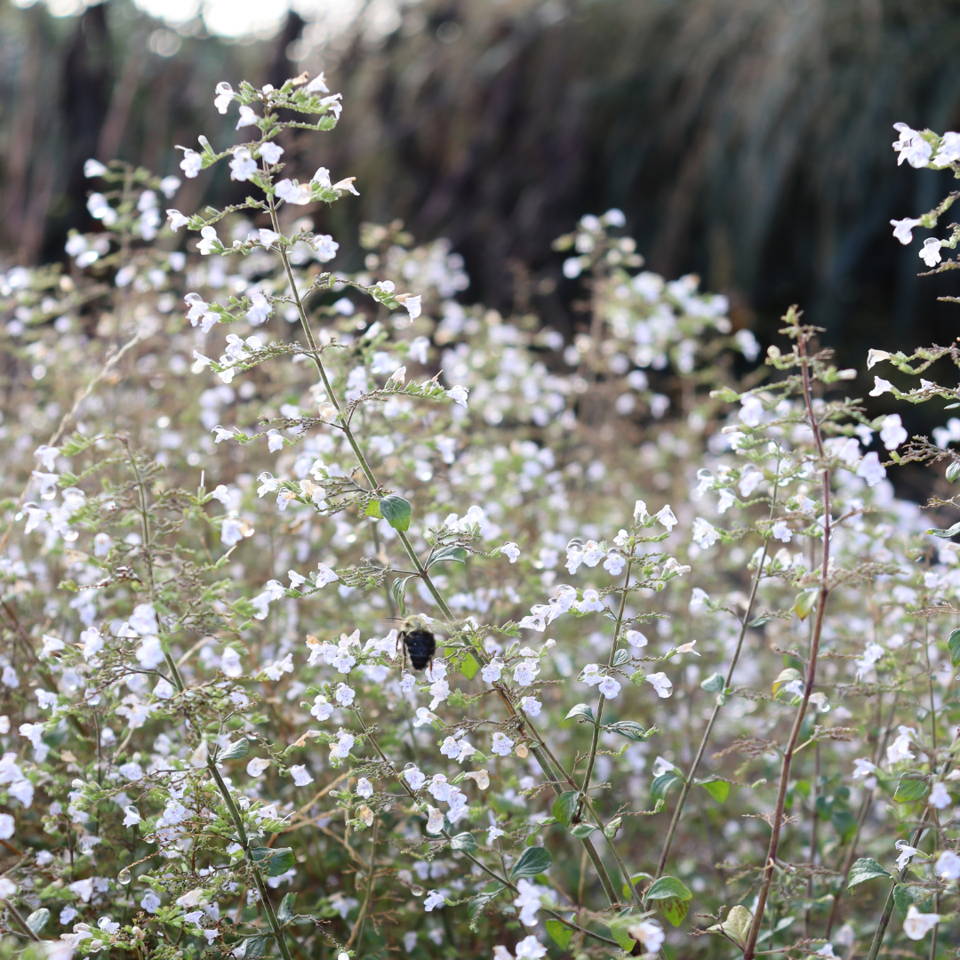
Calamint (Calamintha nepeta)
Easy care, durable, and great for beginner gardeners looking to attract pollinators. What's not to love about calamint? Closely related to catmint (Nepeta), the small but mighty, confetti-like flowers are densely packed along aromatic foliage.
Highlights:
- Hundreds of tiny flowers attract honeybees and leafcutter bees.
- Aromatic foliage when crushed - deters deer and rabbits.
- Blooms early summer, starting the show before other summer-blooming plants.
- Dozens of white/blue flowers provide nectar to pollinators.
- 2021 Perennial of the year by the Perennial Plant Association.
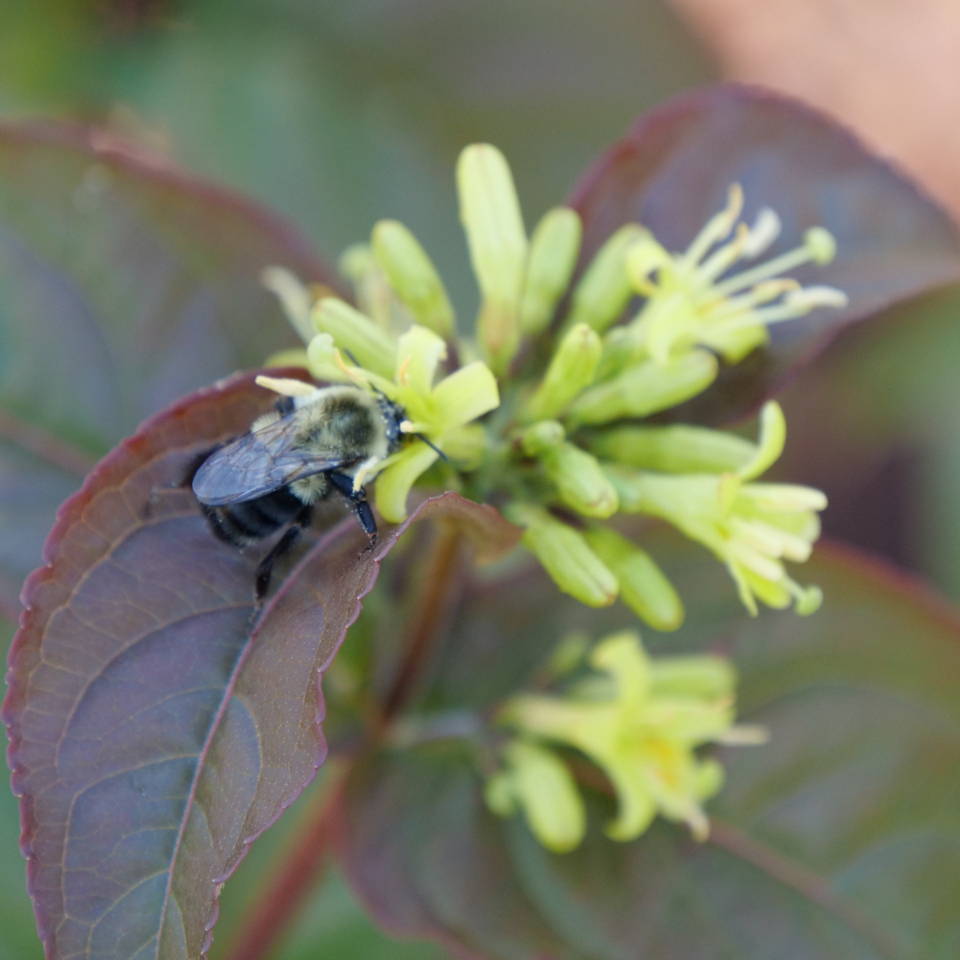
Bush Honeysuckle (Diervilla)
The native bush honeysuckle (Diervilla) features blazing leaves in autumn and pretty orange hues, but it's the yellow flowers that attract bees! The flowers attract pollinators with nectar, but the foliage hosts many species of caterpillars and hummingbird moths.
Highlights:
- Shrub filled with dozens of yellow trumpet flowers are irresistible to bees.
- Foliage turns orange in the fall, adding bright colors to the landscape.
- Adaptable shrub that is easy to grow in various soils and light conditions.
- Great option to attract pollinators in shade gardens.
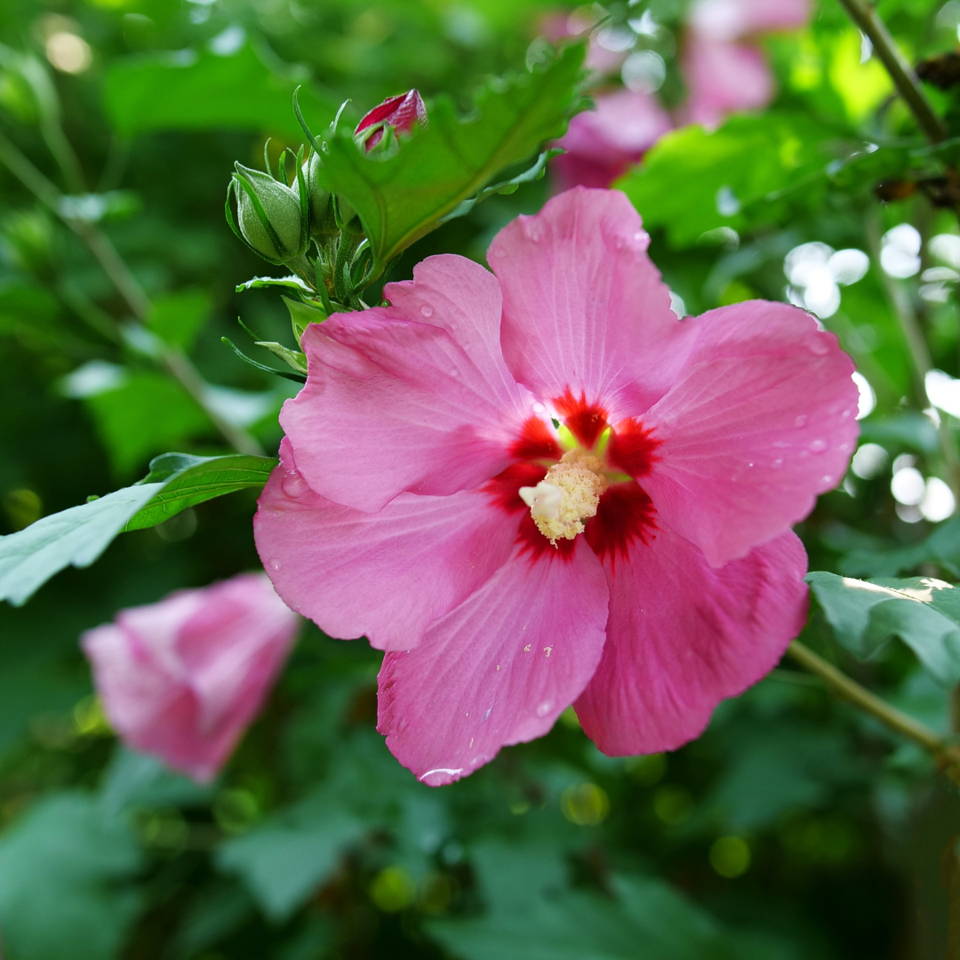
Rose of Sharon (Hibiscus syriacus)
The tall habit and giant flowers of Rose of Sharon make it an ideal choice for hedges or specimen plantings. We can't think of a more romantic pollinator plant that brings this much flower power!
Highlights:
- Attracts bees, butterflies and hummingbirds. Nearly every pollinator finds Rose of Sharon irresistible (and so do we!)
- Giant flowers with open centers make it easy for bees and other pollinators to access the nectar.
- Staminal column is coated in a heavy layer of pollen.
- Long-blooming, provides a food source for pollinators for many months.
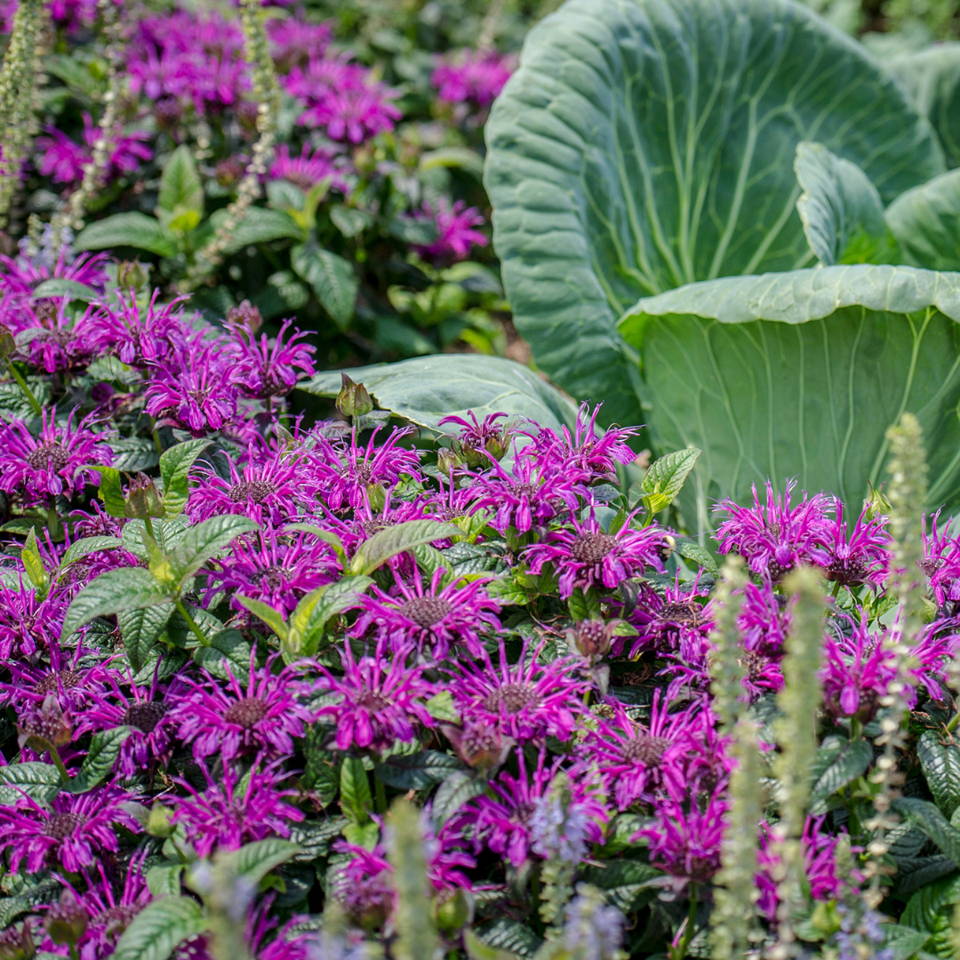
Bee Balm (Monarda)
It makes sense why the common name for Monarda is bee balm because this plant is a magnet for honeybees and more. This native perennial features colorful, slender tubular flowers on broad flower heads, providing a large landing pad for pollinators to stake their claim.
Highlights:
- Bright tubular flowers atop sturdy stems have an open center that is a buffet filled with nectar!
- Choose bee balm varieties that have more violet/purple hues to attract more bees than red varieties.
- Aromatic foliage is pleasant to humans, but deters deer and rabbits.
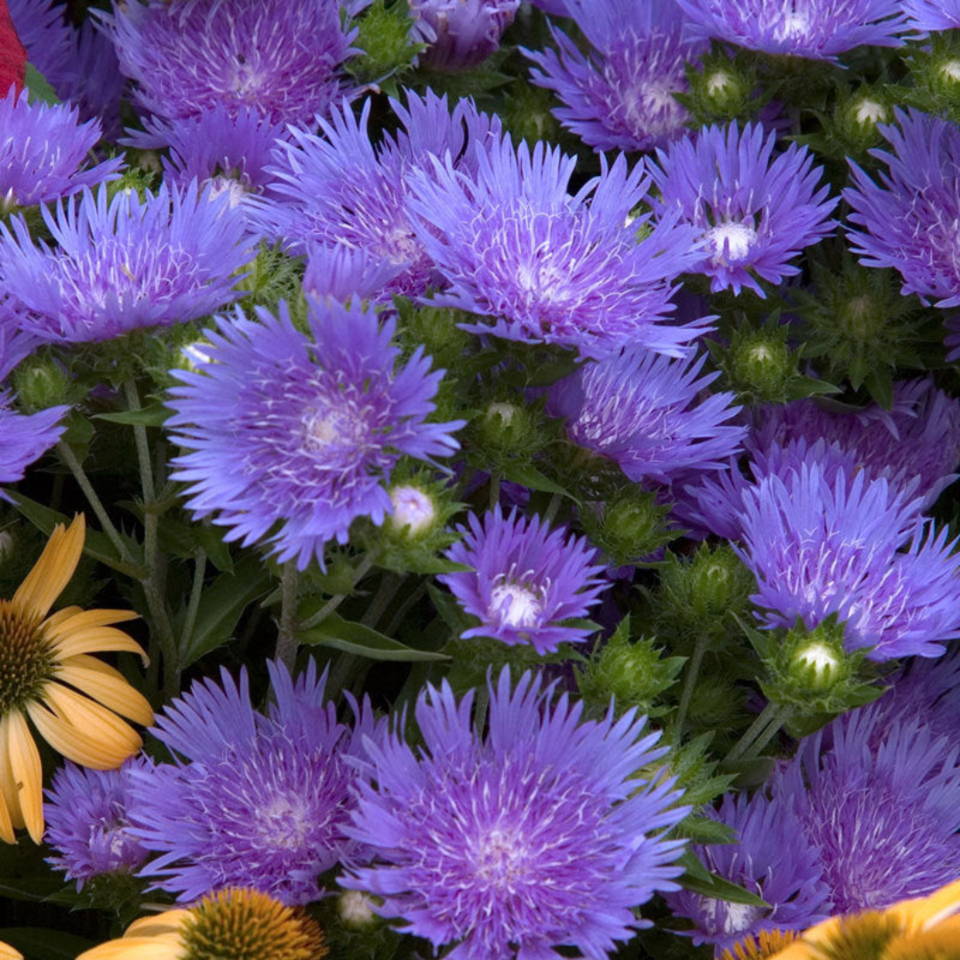
Aster
Highlights:
- The violet, blue, and purple hues of aster attracts bees in troves!
- Blooms from late summer into November, providing a late-season source of pollen for bees and butterflies.
- Not all asters are native to North America, but the perennial asters we offer are.
- It's deer and rabbit resistant, on top of being easy to grow!
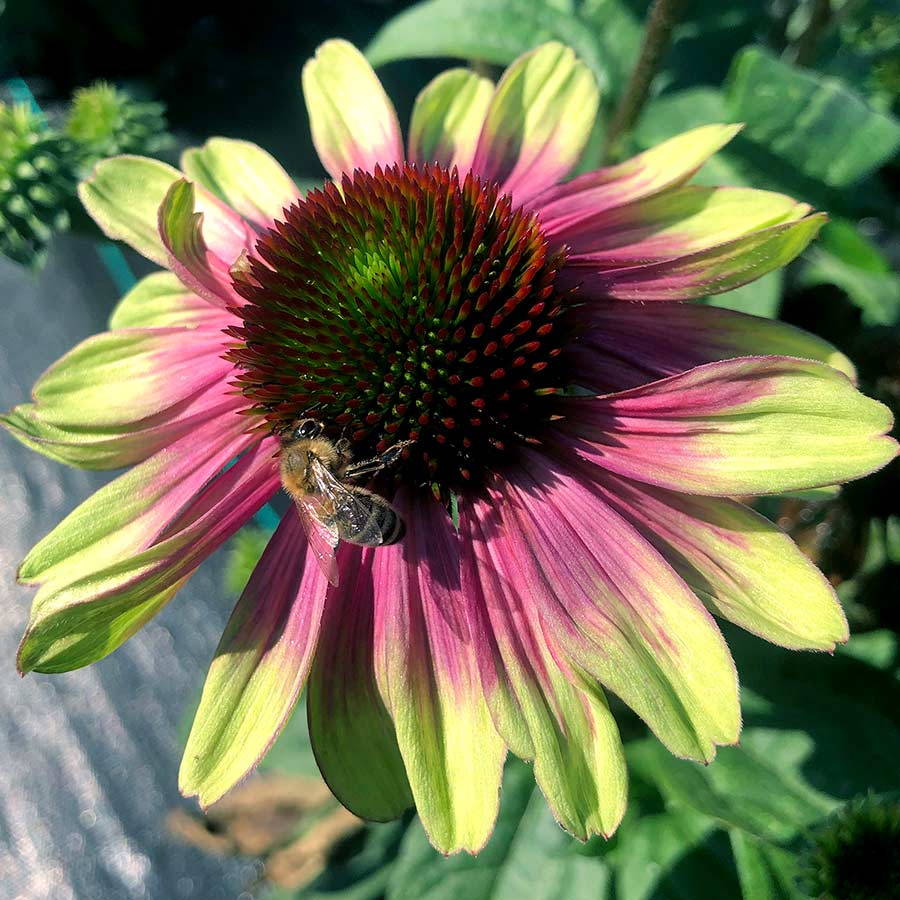
Coneflower (Echinacea)
When we think of summer-blooming plants, we can't help but envision a sea of colorful coneflowers! Just plant in a sunny spot with well-drained soil and watch as they bloom with ease from June through July.
Highlights:
- Large landing pad is sturdy and can hold multiple bees at once.
- Purple coneflower (Echinacea purpurea) is a native perennial that is the most appealing to bees. But all varieties serve pollinators in one way or another!
- Petals and seed heads are especially appealing to honeybees and provide a long-lasting food source during the summer months.
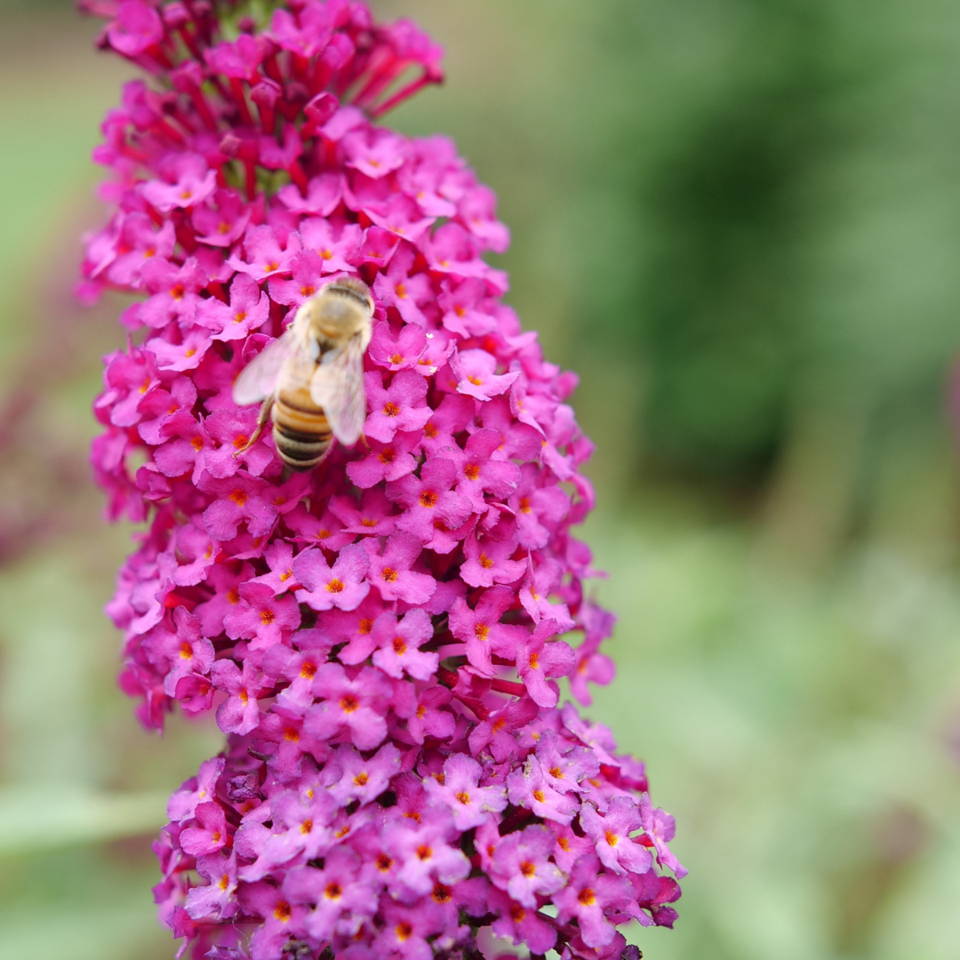
Butterfly Bush (Buddleia)
Butterflies don't just adore butterfly bush as its name implies; this shrub has many nectar-filled florets that bees love as well! So what makes butterfly bush so intoxicating to bees? The purple, pink, and blue colors with a sweet honey scent check all their boxes.
Highlights:
- Panicles are filled with hundreds of flower clusters, filled with nectar. Some varieties feature flower spikes up to 10 inches long!
- Sweet honey-like scent is adored by nearly every pollinator.
- Choose varieties that don't self-seed to ensure butterfly bush doesn't spread.
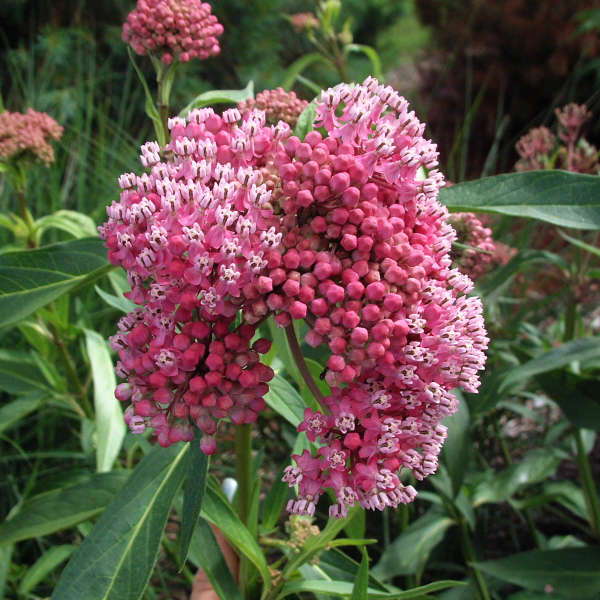
Milkweed (Asclepias)
Milkweed is a native perennial thrives in meadow gardens throughout the United States. The sturdy stems support large clusters of flowers, literally oozing with pollen and nectar.
Highlights:
- Low maintenance, just plant in a sunny spot with well-drained soil.
- Florets provide a consistent flow of nectar that bees can't get enough of.
- By fall, milkweed flowers are spent and what's left is large seed pods that birds love to feed upon.
- Fast growing, you won't have to wait long to enjoy this addition to your pollinator garden!
- Supports more than bees, but the lifecycle of Monarch butterflies as well!
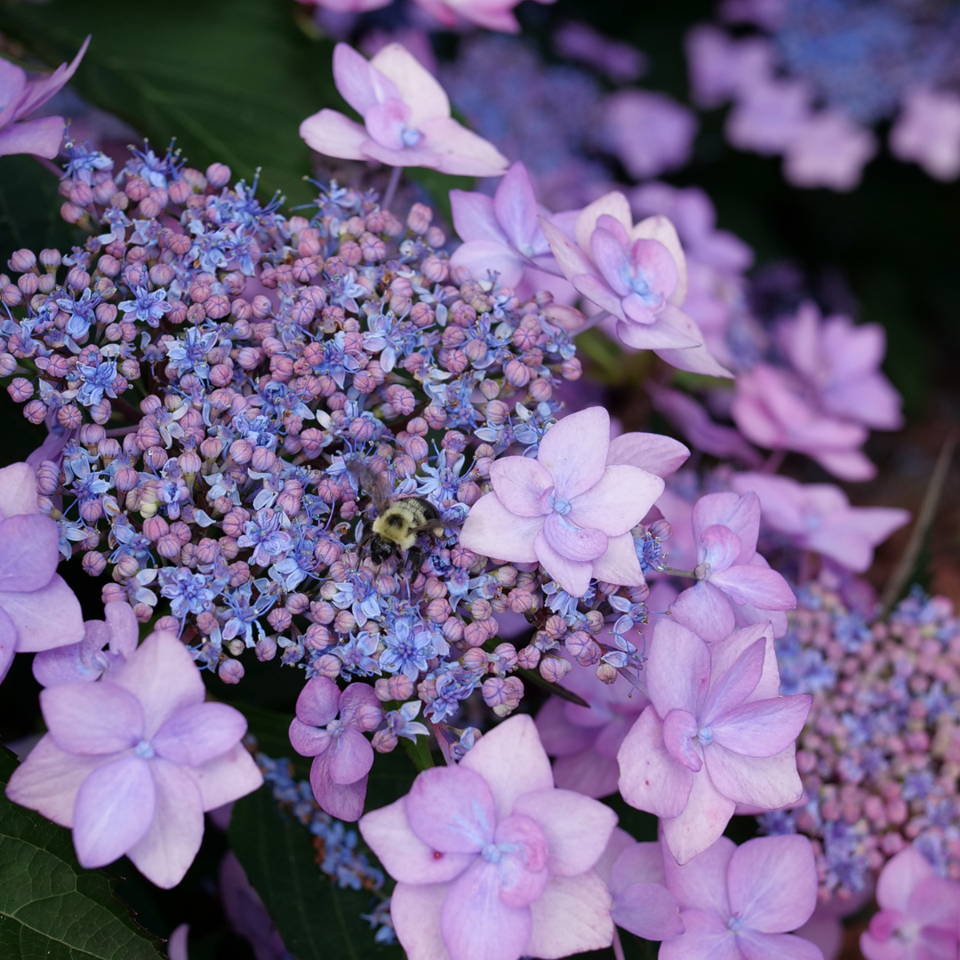
Hydrangea
While hydrangeas aren't common pollinator plants, the right hydrangea can be a beacon of pollinator activity! Mophead hydrangeas have infertile, showy florets that block access to fertile florets with nectar and pollen, making it difficult for bees to enjoy. However, varieties with exposed fertile florets, like lacecap hydrangeas, act as a pollinator buffet.
Highlights:
- Lacecap hydrangea varieties with showy florets are preferred by bees.
- Choose for hydrangea varieties with pink, white, or purple/blue hues to attract even more bees.
- Hydrangeas pair well with other sun-loving pollinator plants like coneflower, butterfly bush, and calamint.
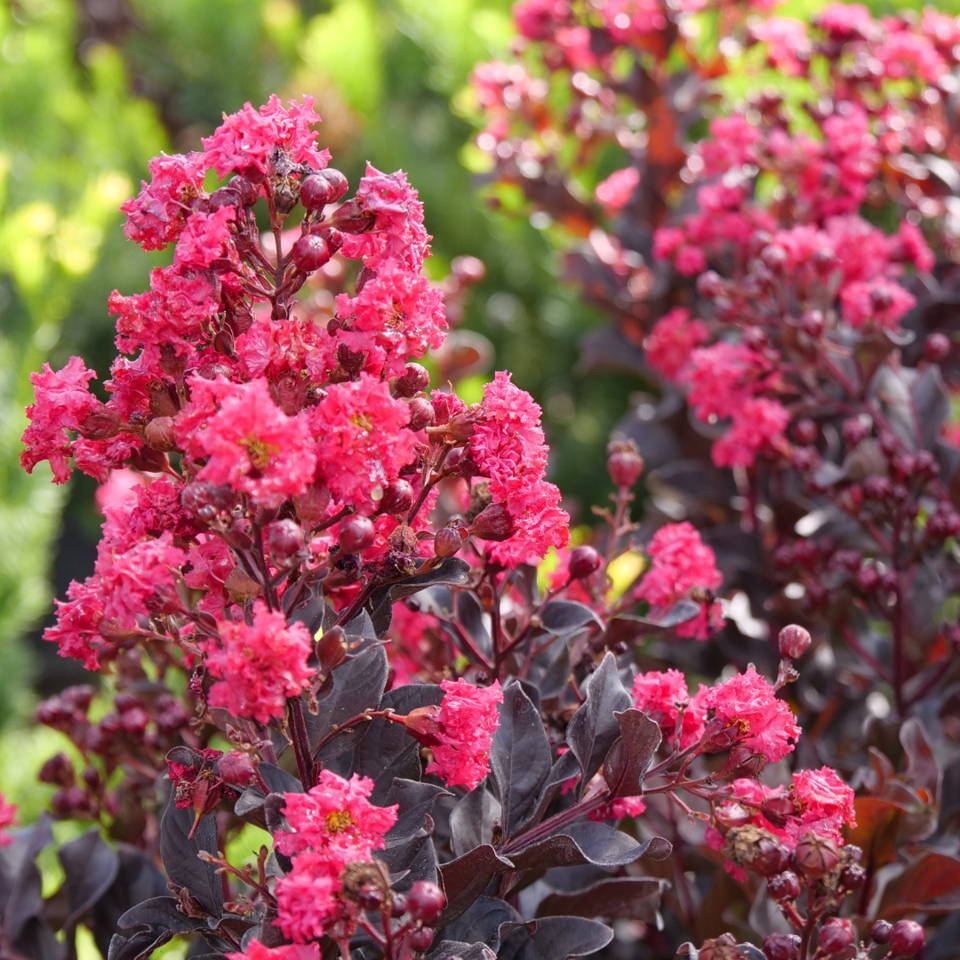
Crapemyrtle (Lagerstroemia indica)
Crapemyrtle may be among the most underrated pollinator plants, but not in our eyes! This shrub is a staple in pollinator gardens, not just for its attractive, bright, ruffled flowers that contrast deep foliage but for its pollinator benefits.
Highlights:
- Contains two types of pollen, one that aids in bees digestion and one that aids in fertilization/pollination.
- Large shrub that can be used in place of a small tree.
- Blooms late summer when fewer food resources are available for bees.
These are just some of our favorites, but it doesn't stop there! There are many pollinator garden staples that bees love to feed on.
If you have questions, let us know! Comment your questions below or reach out through our contact us page. We have a team of horticulturalists who are here to help!

